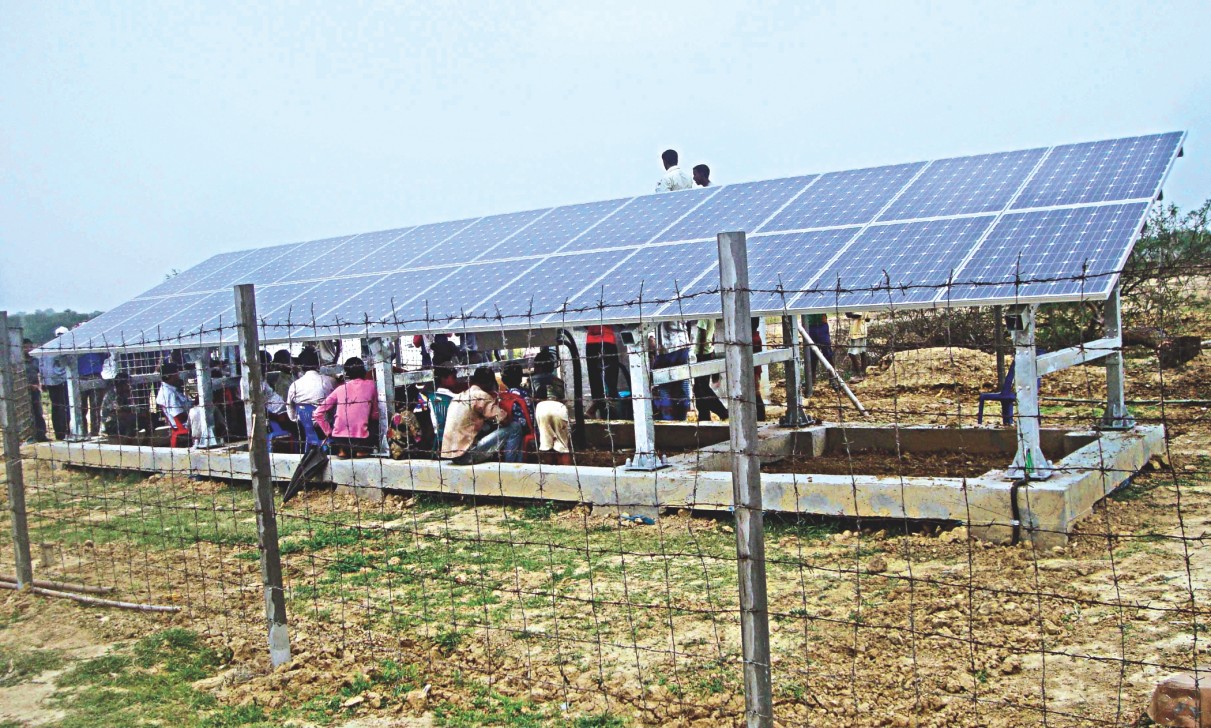Solar energy prospects getting dimmer

Solar energy installation has lost momentum in the last two years as the appetite for the cleaner electricity fell in the face of fast-expanding electricity connections in off-grid areas by public agencies.
Installation of solar energy system dropped 19 percent year-on-year to 43.25 megawatt last year, according to the Sustainable & Renewable Energy Development Authority (Sreda).
This was the second straight year that the solar energy drive slowed down since the installation by various agencies reached its peak of 57.75 MW in 2017.
It was mainly because of expansion of solar home system in off-gird areas at that time, said Sreda Chairman Md Helal Uddin said.
“As the entire Bangladesh is coming under hundred percent electrification, nothing is going to remain off-gird,” he added.
The expansion of solar home systems, now standing at around 60 lakh, is hitting the brakes as demand waned for increased electricity connection as the government strives to ensure electricity for all by March 2021.
Now more than 95 percent of the population has access to electricity and electricity connection has grown 39 percent to 3.60 crore since June 2017.
Nearly 60 lakh new consumers received power connection in the last one and a half years, according to the Power Division and the finance ministry.
The adoption of renewable energy has slowed in Bangladesh at a time when many other countries are increasingly turning to solar and wind energy to move to cleaner energy on the back of technological innovations and favourable government policies.
The decade-long trend of strong growth in renewable energy capacity continued in 2018 with global additions of 171 gigawatts (GW), according to the International Renewable Energy Agency (IRENA).
The annual increase of 7.9 percent was bolstered by new additions from solar and wind energy, which accounted for 84 percent of the growth.
Because of the expansion of the electricity grid, solar home system and solar mini-grid are being closed as people get electricity at lower prices than what they got from mini-grids, Helal said.
“We are now taking various measures to scale up renewable energy generation.”
One of the steps is to encourage people to set up solar energy on rooftops of industries and buildings and enable operators of the rooftop solar system to supply excess electricity to national grid at certain tariffs.
Industrial rooftops hold huge potential in Bangladesh and using rooftops of factories 1,000 MW of electricity can easily be generated, said Mahmood Malik, executive director and chief executive of Infrastructure Development Company, earlier in September.
Other initiatives of the Sreda include establishment of floating solar power plants and solar-based irrigation pumps to increase renewable energy generation.
“As a result, total renewable energy generation is increasing,” Helal said. Solar energy is the biggest source of clean energy in Bangladesh with 22,787 MW of power generation capacity. Total installed capacity of solar energy stood at 372 MW last year, Sreda data showed.
The government has set a target to produce 10 percent of electricity from renewable sources by 2020. Including solar, combined installed renewable energy capacity is nearly 3 percent of the total power generation capacity.
A higher number of solar panels were installed in on-grid areas compared to off-grid areas in the last two years, Sreda data showed.
Many people in rural areas are still installing solar home systems to cut electricity bills, said Dipal Barua, president of the Bangladesh Solar and Renewable Energy Association.
“This will increase because of rising electricity tariff.”
But given the ongoing international tension and the risk of price spiral of oil, Bangladesh needs to develop a solid base for renewable energy so that it can cut risks of higher power generation cost resulting from the spike in prices of fossil fuels.
An action plan with annual renewable energy target is needed, Barua said, while urging the government to provide land either on lease or on rental basis to encourage investors to establish solar power plants. Getting land to set up solar power plants is tough and land is one of the major constraints behind the sluggish pace of setting up power plants in the private sector, he added.
